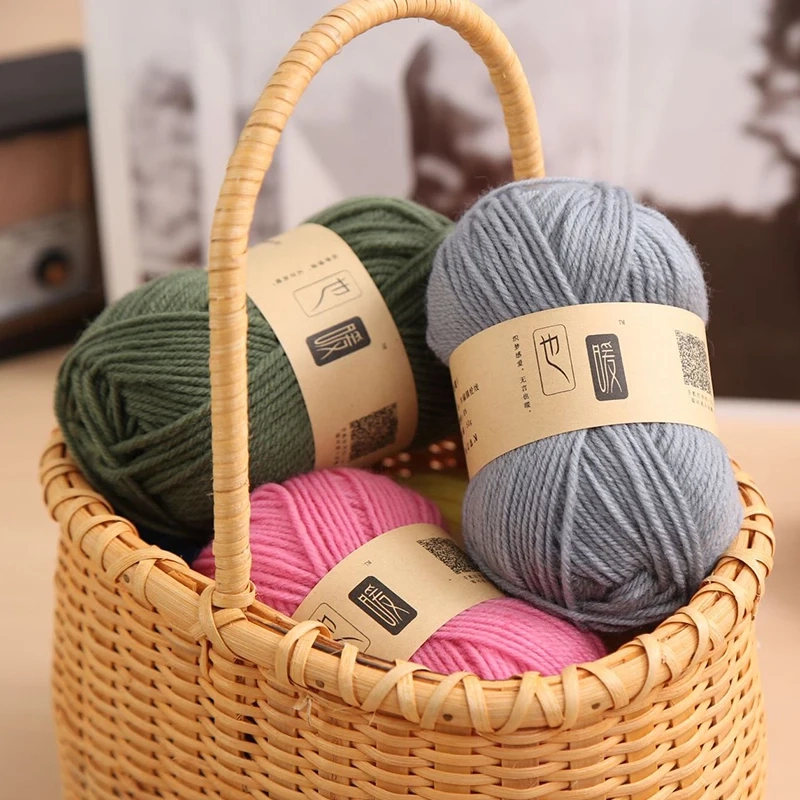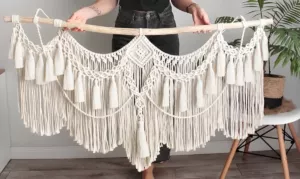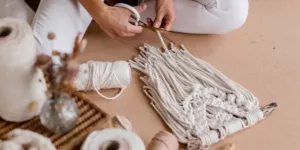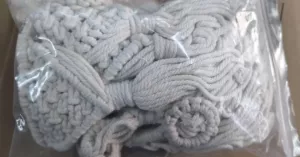Macrame, the age-old craft of knotting cords into intricate patterns, has experienced a resurgence in recent years. Once a staple of 1970s decor, it has now found its way into the hearts of modern crafters who value both the creative process and the unique, handmade products that result. While cotton and jute are commonly associated with macrame, many crafters wonder if wool yarn can be used for macrame projects.
This blog post aims to answer that question comprehensively. We will delve into the pros and cons of using wool yarn for macrame, compare it with other popular yarn types, and explore specific projects where wool might shine. By the end of this article, you’ll have a well-rounded understanding of whether wool yarn is suitable for your next macrame project.
Understanding Wool Yarn
Characteristics of Wool Yarn
Wool is a natural fiber obtained from sheep and other animals like goats and alpacas. Known for its softness, warmth, and elasticity, wool has historically been used in knitting and weaving. Here are some key characteristics of wool yarn:
- Softness: Wool is exceptionally soft compared to other natural fibers like jute or hemp. This makes it gentle on the hands, which is an advantage during long crafting sessions.
- Warmth: Wool is insulating, making it ideal for projects requiring warmth.
- Elasticity: Wool has natural stretch, which provides flexibility and resilience.
- Texture: Wool offers a plush, luxurious feel, adding an element of coziness to finished projects.
- Dyeability: Wool yarn takes dye well, allowing for a wide range of vibrant colors.
Types of Wool Yarn
Wool yarn is available in various forms, each offering different attributes:
- Merino Wool: Known for its ultra-fine fibers and exceptional softness.
- Alpaca Wool: Offers a silky texture and is hypoallergenic.
- Cashmere Wool: Luxurious and incredibly soft but tends to be on the expensive side.
- Blended Wool: Often mixed with other fibers like nylon or acrylic to offer a variety of textures and strengths.
Advantages of Using Wool Yarn in Macrame
Softness and Comfort
One of the most significant advantages of wool yarn is its softness. If you’re planning to create items that come into direct contact with skin, such as jewelry or wearable accessories, wool is a fantastic choice. The gentle feel of wool will make these items comfortable to wear.
Flexibility and Elasticity
The natural elasticity of wool can be both an advantage and a challenge. In macrame projects where flexibility is desired, such as in stretchy belts or wraps, wool’s elasticity is beneficial. It allows the finished piece to have some give, making it more versatile and comfortable.
Insulating Properties
Wool is warm and insulating, making it an excellent choice for projects like blankets, wraps, or cozy home decor items. Imagine a wool macrame wall hanging that not only adds aesthetic appeal but also insulates your living space!
Aesthetic Appeal
Wool can bring a unique texture and luxurious feel to your macrame projects. Its plushness can add depth and visual interest, making your creations stand out. Wool is also available in a wide range of colors, enabling you to experiment with a vibrant color palette.
Dyeability
Wool takes dye exceptionally well, which means you can easily customize your yarn to match your project’s specific color requirements. This flexibility is a significant advantage for crafters who want their macrame pieces to fit seamlessly into their existing decor or who wish to experiment with ombre or gradient effects.
Disadvantages of Using Wool Yarn in Macrame
Cost
High-quality wool, especially varieties like Merino or Cashmere, can be expensive. If you’re planning a large macrame project, the cost can add up quickly. For budget-conscious crafters, this can be a deterrent.
Care Requirements
Wool requires special care, such as hand washing and air drying, to maintain its quality. This can be a disadvantage for items that are frequently used and need regular cleaning.
Durability
While wool is strong, it is not as durable as fibers like cotton or jute. Wool can pill and wear out faster, especially in projects that face a lot of friction, such as handbags or plant hangers.
Limited Structural Integrity
The flexibility and stretchiness of wool can also be a drawback in projects that need to maintain a rigid structure. For example, using wool for a macrame plant hanger might not be ideal since the hanger could stretch under the plant’s weight.
Comparing Wool with Other Yarn Types
- Cotton: Cotton is soft, strong, and very durable. It’s excellent for macrame projects that require structure and longevity, such as plant hangers or wall hangings. Unlike wool, cotton retains its shape well and is easier to care for.
- Jute: Jute is strong and has a rugged, rustic appearance. It’s less flexible than wool and can be rough to handle. However, jute is perfect for heavy-duty projects that need extra strength, such as outdoor decor.
- Hemp: Like jute, hemp is durable and eco-friendly. Its stiffness can be challenging to work with but provides excellent structural integrity. Hemp is suitable for projects requiring rigidity rather than flexibility.
- Polyester/Nylon: These synthetic fibers are incredibly durable and come in a wide range of colors. They are excellent for outdoor projects due to their resistance to elements. However, they lack the natural feel and eco-friendliness of wool and other natural fibers.
Ideal Macrame Projects Using Wool Yarn
Wall Hangings
Wool’s plush texture and vibrant colors can add a cozy and luxurious feel to wall hangings. The softness of wool can create a more welcoming ambiance in living spaces or bedrooms.
Jewelry and Accessories
For items like necklaces, bracelets, and headbands that come into direct contact with the skin, wool’s softness makes it an ideal choice. These accessories will be comfortable to wear for extended periods.
Cozy Home Decor
Items like pillows, throws, and even small rugs can benefit from wool’s insulating properties. These projects will not only look beautiful but also add warmth to your home.
Wearable Macrame
Projects such as shawls, scarves, and even garments can be crafted using wool. The softness and warmth of wool make these items both functional and stylish.
Seasonal Decorations
Given wool’s warmth and cozy texture, it’s perfect for creating seasonal decor items like festive wreaths, ornaments, and other winter-themed decorations.
Tips for Working with Wool Yarn in Macrame
Choose the Right Knotting Technique
Certain knotting techniques work better with wool than others. For instance, the Josephine knot or softer, looser knots will take advantage of wool’s plush texture. Tight knots might cause the wool to felt and lose its softness.
Manage Wool’s Stretch
To counter the stretchiness of wool, consider using a blend of wool with another fiber like cotton. This can provide additional structure while retaining some of wool’s desirable properties.
Pre-Wash Wool Yarn
Pre-washing your wool yarn can help to set it and reduce future shrinkage. Always air dry to prevent felting.
Care and Maintenance
Educate yourself on the specific care requirements for wool. While wool is somewhat resilient, improper care can ruin your hard work. Hand wash in cold water and air dry flat to maintain the integrity of your wool macrame pieces.
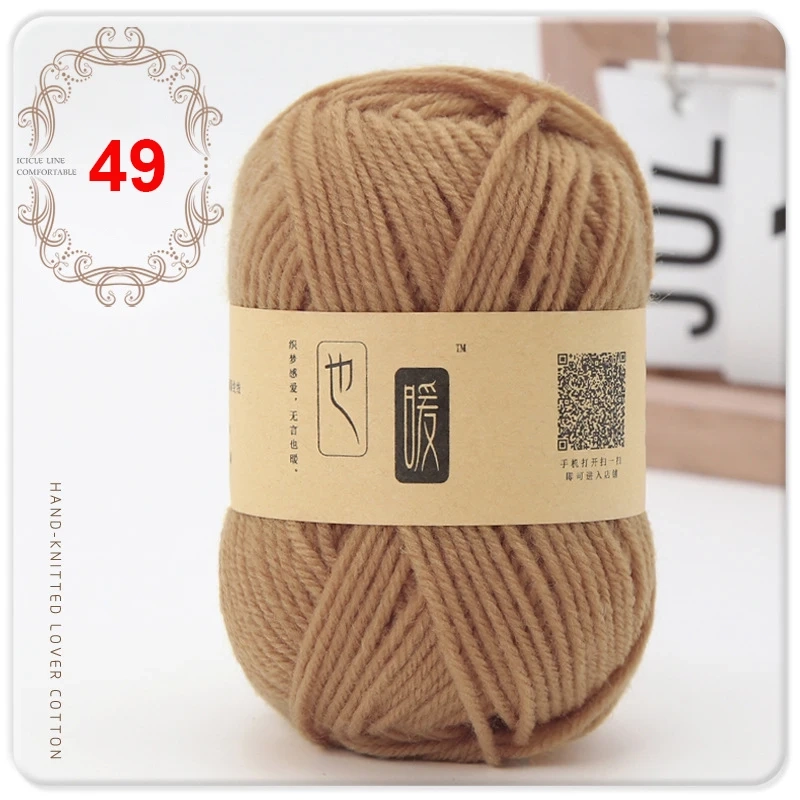
Cotton Candy Milk Yarn Best Yarn for Crochet
Elevate your crochet and knitting experience with our sumptuously soft Cotton Candy Milk Crochet Yarn, a harmonious blend of 100% pure cotton and premium acrylic fibers designed for the modern artisan.
Conclusion
Wool yarn can indeed be used for macrame, offering its own set of unique advantages and some challenges. Its softness, elasticity, and incredible dyeability make it suitable for a wide range of projects, particularly those requiring a cozy, plush feel. However, it may not be the best choice for projects needing significant structural integrity or extreme durability.
By understanding the pros and cons, and experimenting with different types of wool, you can find creative ways to incorporate this luxurious fiber into your macrame projects. Whether you’re crafting for personal enjoyment or looking to create items for sale, wool yarn offers a world of creative possibilities that can elevate your macrame artistry to the next level.

